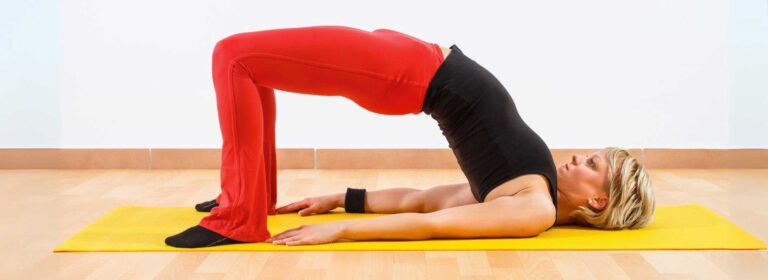Yoga Practice Name
Setu Bandhasana


Setu Bandhasana
Bridge Pose
Setu Bandhasana, or Bridge Pose, is a gentle backbend that resembles the shape of a bridge. It is practiced lying on the back and lifting the hips upward while keeping the feet and shoulders grounded. This posture opens the chest, strengthens the legs and back, and stimulates the thyroid and abdominal organs.
1. Urdhva Dhanurasana, 2. Purvottanasana, 3. Salamba Setu Bandhasana, 4. Bhujangasana, 5. Dhanurasana, 6. Matsyasana
Alignment & Technique